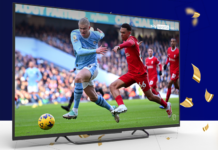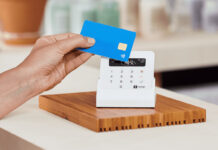The right equipment in the right place can make for a more productive space

A well equipped back-bar area allows operators the chance to offer an on-trade experience that most customers would struggle to replicate at home.
It makes sense, then, for publicans to ensure everything is in order on the staff side of the taps, and equipment suppliers say there are several steps operators can take to keep the back-bar area clean, efficient and well maintained.
Paul Crowley, marketing manager for Winterhalter UK, said operators should first think about the best location for their back-bar equipment to ensure staff can effectively serve and clear the bar area and tables.
“For example, site a glasswasher at the end of the bar, so staff are not struggling to get past when the door is open, and dirty glasses can be stacked neatly away from the serving area, ready to be loaded,” said Crowley.
Gill Head of Artis agreed that layout is key to ensuring staff are able to perform efficiently behind the bar.
“When you’re making room for all those bar supplies and bartending equipment, don’t forget to factor in the human element,” said Head.
“Set up serving stations for specific activities, like blending drinks, and make sure there’s room to properly shake those cocktails.”
Head suggested operators stock equipment, mixers and glasses “within easy reach of the work area”.
“If bartenders can’t make eye contact and serve efficiently, they can’t sell successfully,” she said.
A smooth running back-bar was described as “vitally important” by Bob Wood of DC Warewashing, who agreed that if the layout isn’t planned correctly it could affect workflow. Wood also highlighted how back-bar layout can impact on cleanliness.
“You need to think about how dirty items will get to the machine and also how the clean ware will be taken away afterwards,” said Wood.
“Get this wrong and you can end up with an entirely unworkable scheme.”
Any workable back-bar scheme must include clean and well maintained equipment and Wood suggested operators have a cleaning rota in place and make sure all members of staff are trained on the importance of looking after back-bar equipment.
“Your staff can do this by simply cleaning the filters and the tank on a daily basis and clean the wash arms on a weekly basis,” said wood.
Simon Frost of the Catering Equipment Suppliers Association (CESA) also stressed the importance of keeping equipment clean, adding that “nothing will put a customer off buying a drink or snack more than dirty equipment”.
“Follow manufacturers’ instructions on day to day cleaning and care of back-bar equipment and make sure staff are trained to use the full features of the equipment and also to spot problems early,” he said.
While having a range of equipment on the back-bar does create work in terms of cleaning and maintenance, it also creates sales opportunities, said Frost.
“Light equipment is often a quick, flexible and inexpensive way for caterers to extend their menus,” he said.
“For example, a panini grill can be sited behind the bar.
“Like most light equipment, it can be plugged into a standard 13 amp supply and is relatively easy to operate – which means that the bar can instantly be providing new products and generating extra profits.”
Whatever an outlet is offering on the menu, there are some pieces of equipment which will be common to almost every outlet in the on-trade.
Mark Hogan, marketing and sales manager at Foodservice Equipment Marketing, highlighted ice machines in particular as “essential pieces of back-bar kit” which operators must ensure are both reliable and conveniently situated.
“To make the most of the space available behind the bar, look for ice machines that have an integral storage bin, low profile design and space-saving front-breathing ventilation, so that they can be installed in the tightest of spaces, with no side clearance required,” said Hogan.
Another piece of equipment that’s key to keeping product cool behind the back-bar is the bottle fridge.
Malcolm Harling, sales and marketing director at Williams Refrigeration, said publicans should choose back-bar fridges with good lighting and adjustable shelves “enabling the display to be changed to feature different drinks as required”.
Harling said operators should make sure to purchase “robust” back-bar fridges “as they have to survive a punishing level of wear and tear”.
“They have to operate efficiently; maintain temperature as bottles are taken out, stock replenished and doors continually opened and closed,” he said.

























